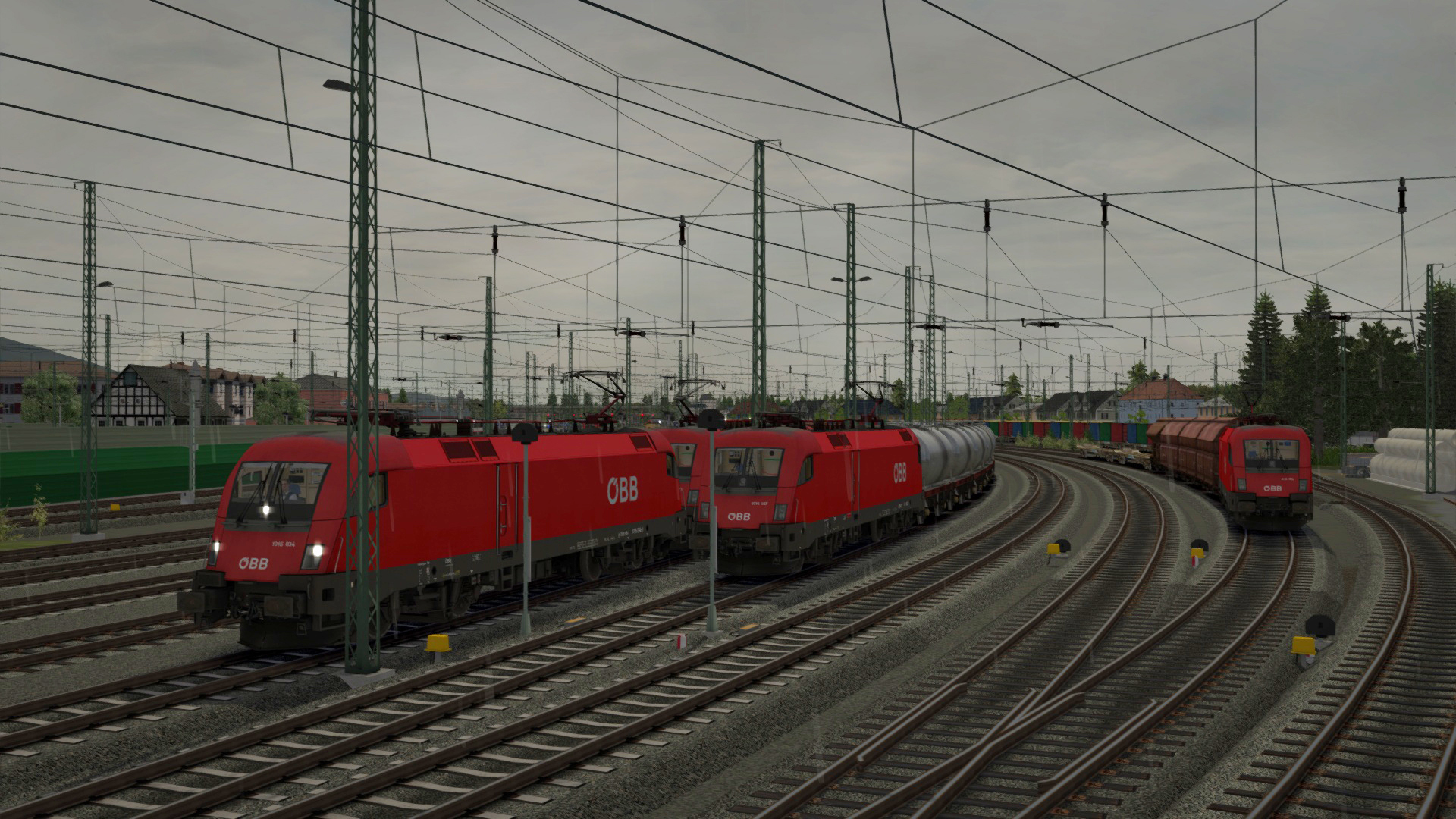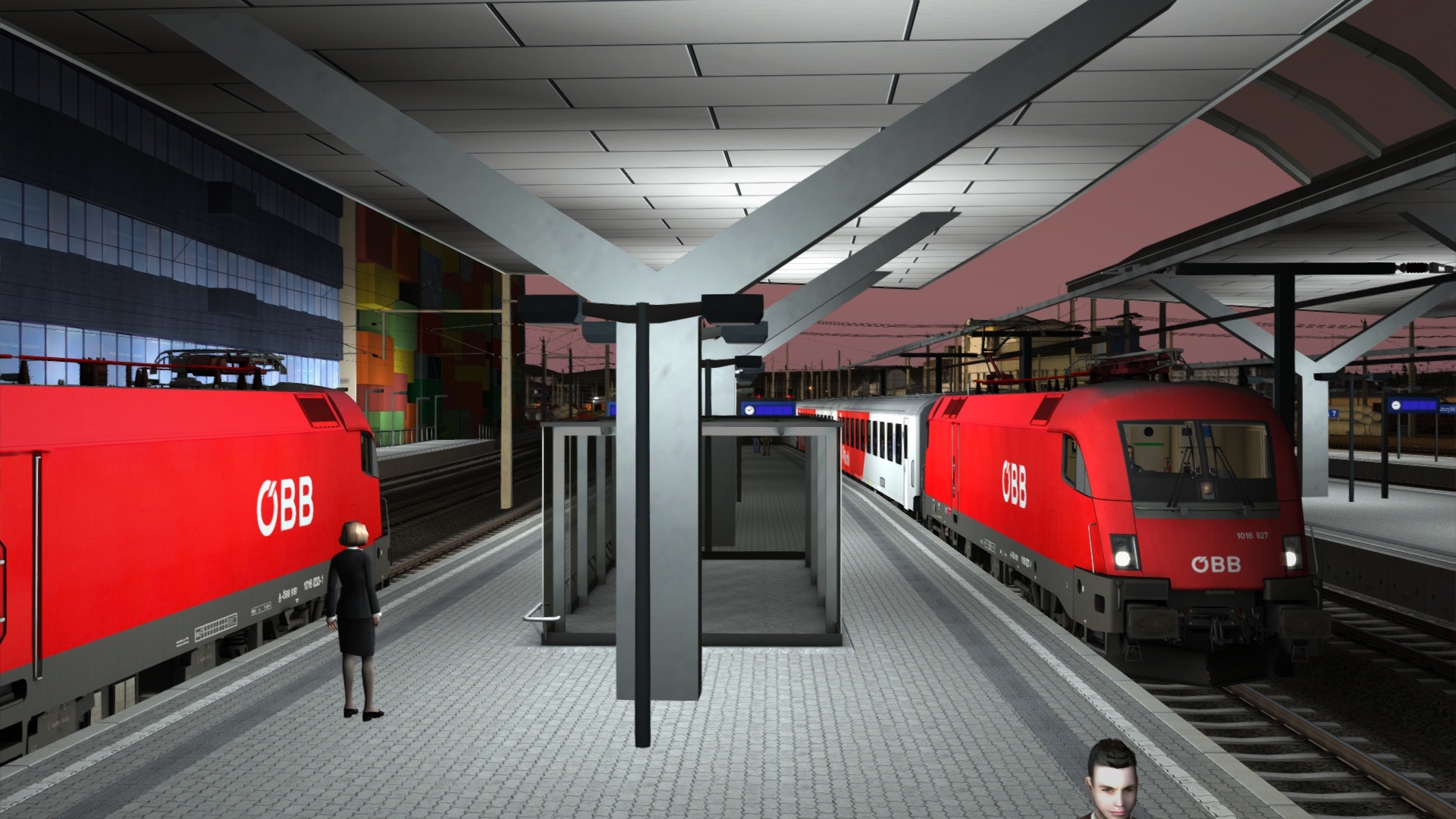Smokebox locomotives for Train Simulator Classic are renowned for their ground-breaking quality, exquisite detail, authentic controls, and realism of performance – and the new and now available Smokebox Union Pacific Heavy Challenger extends all those features to yet another level of excellence!
The Union Pacific Heavy Challenger as developed by Smokebox for Train Simulator Classic meticulously represents the 45 Union Pacific 4-6-6-4s (known as groups 4664-3 and 4664-4) built by Alco (American Locomotive Company) during the World War II years of 1943 and 1944.
Designed to burn coal and haul tonnage on Union Pacific’s demanding transcontinental route, but equally adept at hustling passenger trains, these superlative locomotives served the Union Pacific into the late 1950s, and one – Union Pacific 3985 – went on to contemporary fame as a member of Union Pacific’s Heritage Fleet.
As Union Pacific’s Heavy Challengers (which weighed in at over a million pounds with tender) rolled out of Alco’s Schenectady (New York) works during WWII, six virtually identical UP-design 4-6-6-4s were allocated by the War Production Board to work for the Denver & Rio Grande Western (D&RGW), where the locomotives served capably until heading to the UP at the end of the war, then to the Clinchfield Railroad in 1947. And the new Smokebox Heavy Challenger DLC includes the 4-6-6-4 in Rio Grande livery.
The Smokebox Heavy Challenger for Train Simulator Classic delivers unmatched visual realism and the full, exhilarating experience of operating this massive locomotive, with the cab of the Challenger featuring nearly 90 working controls, gauges, or animations! The 4-6-6-4 offers a real-life engineer’s authentic railroading challenges, but it is also accessible and enjoyable whatever your level of expertise, featuring integrated complex or simple controls and with an auto-fireman and even an auto-engineer option.
The Heavy Challenger’s remarkable features also include a wide range of customizable details (which can be adjusted while in game). Among these are the addition of "wind wings" (smoke deflectors), pilot door and front coupler open or closed, clamshell smoke stack hood open or closed, changing classification light colors, and even changes to the amount of lagging around the steam pipe arms and elbows. As with all Smokebox locomotives, the Challenger features superb sounds and realistic air braking, firing, water usage, sanding, and additional operating features, all of which are explained in an accompanying information-rich 72-page manual.
The Smokebox Heavy Challenger is provided in four livery variations: Union Pacific steam-era clean and dirty; Union Pacific silver striping (as worn by famed UP 3985), and in D&RGW livery. And both HD (high detail) and SD (standard detail) variants are included.
To put you to work, the Challenger DLC includes a selection of period-appropriate refrigerator cars, a Union Pacific CA-4 caboose, and a selection of three career scenarios on the Train Simulator Classic Wasatch Grade route (as developed by Milepost Simulations and available on Steam as a separate DLC). The 4-6-6-4 is also QD (Quick Drive) enabled. And there’s no doubt enthusiasts will be creating a variety of Steam Workshop scenarios for the Union Pacific 4-6-6-4 on routes such as Wasatch Grade and Sherman Hill, as well as the Rio Grande edition on Train Simulator Classic’s popular D&RGW Soldier Summit route.
Previous Smokebox releases have included its highly acclaimed Union Pacific FEF-3 4-8-4 and iconic Union Pacific 4-8-8-4 Big Boy. Together with the new 3900-class Heavy Challenger, these locomotives represented the Union Pacific’s extraordinary “Big Three” late-era steam locomotives, which will provide Train Simulator Classic enthusiasts the opportunity to relive the full glory of the “Big Steam” era on the Union Pacific.
Put on your engineer’s gloves and take the throttle of one of America’s greatest and most renowned steam locomotives. The heavy – and heavenly – Union Pacific Challenger from Smokebox, is now available for Train Simulator Classic at the Steam and Dovetail Games stores!


From steam locomotive creator extraordinaire Smokebox now comes Union Pacific’s legendary 3900-class “Heavy” 4-6-6-4 Challenger for Train Simulator Classic! Constructed by Alco (American Locomotive Works) during World War II, the coal-burning behemoths were designed to tote tonnage but were equally adept at hustling passengers. Note: Screenshots may depict content while in development.

The new Smokebox Heavy Challenger is provided in four livery variations: Union Pacific steam-era clean and dirty and Union Pacific silver striping (above), and in Denver & Rio Grande Western livery (below). And both HD (high detail) and SD (standard detail) variants are included. Screenshots by Gary Dolzall.


The UP Heavy Challenger for Train Simulator Classic delivers unmatched visual realism and the full, exhilarating experience of operating this massive locomotive, with the cab of the Challenger (above and below) featuring nearly 90 working controls, gauges, or animations. The 4-6-6-4 provides a wide variety of available “in cab” views to enjoy as your operate the locomotive.


The Challenger’s features include customizable details (which can be adjusted while in game). Among these are the addition of "wind wings" (smoke deflectors), pilot door and front coupler open or closed, clamshell smoke stack hood open or closed, and changing classification light colors. UP 4-6-6-4 3989 is in standard configuration as it pulls from Echo (above), while sister 3957 is equipped with smoke deflectors (below) at Curvo, Utah.



Million-pound (with tender) Union Pacific 3989 is making its way up scenic Echo Canyon (above and below). Accompanying the Challenger in this new Smokebox DLC are refrigerator cars in multiple liveries, a UP CA-4 caboose, and a selection of three career scenarios on the Wasatch Grade route (as developed by Milepost Simulations and available separately at Steam).

The Heavy Challenger as developed by Smokebox meticulously represents the 45 Union Pacific 4-6-6-4s (known as groups 4664-3 and 4664-4) built during in 1943 and 1944. With a string of yellow reefers in tow, Union Pacific 3950 is climbing Weber Canyon (above) on the Train Simulator Classic Wasatch Grade route, while sister UP 3989 rolls below the often-photographed red rock cliffs of Echo Canyon (below).


With the arrival of the 3900-class Challenger, Smokebox now has created Union Pacific’s “Big Three” of the late-steam era, the beautiful FEF-3 4-8-4 (left), Heavy Challenger (center), and iconic 4-8-8-4 Big Boy (right). As with all Smokebox locomotives, the Challenger features superb sounds and realistic air braking, firing, water usage, sanding, and additional operating features, all of which are explained in an accompanying information-rich 72-page manual.

Put on your engineer’s gloves and take the throttle of one of America’s greatest and most renowned steam locomotives. The heavy – and heavenly – Union Pacific Challenger from Smokebox, is now available for Train Simulator Classic at the Steam and Dovetail Games stores!



































